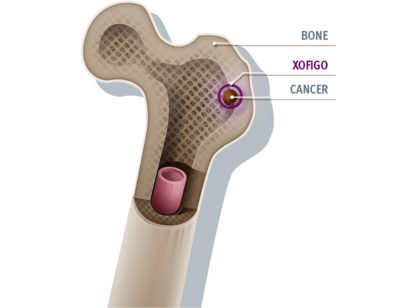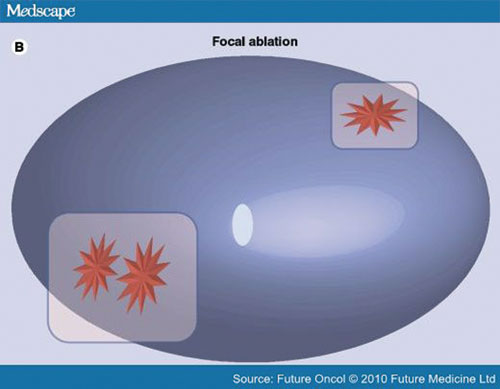
Prostate cancer is the second most common cancer in American men (next to skin cancer) and 1 in 6 will be diagnosed within their lives. These odds are high and it is likely you know someone who has been diagnosed – or who has been told they have an ‘elevated PSA ’ but no confirmation of prostate cancer and are under ‘active surveillance’ or ‘watchful waiting’. Patients may be told to return in a year to repeat the exam while living with the burden of “what if?” which can create significant psychological stress.
The current standard for screening for prostate cancer is a blood test to determine prostate-specific antigen (PSA) levels. Elevated levels may be due to prostate cancer, benign prostatic hyperplasia (BPH), or infection or inflammation of the prostate gland. If elevated levels are detected (over 4.0 ng/mL), a doctor may recommend a trans-rectal ultrasound biopsy (TRUS) to identify the cause. However, this random sampling test has a 30% error rate.[sup]1[/sup]
New FDA approved technology called ‘MRI guided biopsy’ is now available to better detect prostate cancer. Researchers from the Netherlands have reported that ‘MRI guided prostate biopsy is an effective technique in men who have had repeat negative biopsies despite an elevated PSA level.’ As reported in the February 2010 issue of the Journal of Urology, MRI guided biopsy has only a 3% error rate.[sup]2[/sup] Coachella Valley’s Desert Medical Imaging (DMI) was the first outpatient imaging center in the US to offer this procedure and is the only facility offering it in the Valley today.
DMI’s Dr. John Feller states, “Most patients we see have an elevated PSA greater than 4 and most of those patients have already had a TRUS biopsy that was negative.” Dr. Feller adds, “We have found prostate cancer in 60% of these patients.”
This new MRI technology allows practitioners to better identify the specific regions of the gland that look suspicious. Dr. Feller explains that many of these cancers are in locations that cannot be reached by a TRUS biopsy nor identified by standard MRI technology which has been used for 20 years.
“MRI has been used successfully for many types of cancers, but in prostate cancer, it has not been specific enough to allow us to distinguish between benign and malignant diseases. We can now administer ‘diffusion weighted imaging’ which is a way to find prostate cancer based on the fact that the cancer cells prevent the movement of water molecules around the cancer cells. This restriction of water movement can be detected by this new technology.”
A second type of MRI detection DMI uses is Dynamic Contrast Enhanced Imaging in which a patient is given rapid injections of dye through an IV. 2,000-3,000 images of the prostate gland are then taken and sent to a computer which identifies areas that enhance rapidly and then wash out rapidly due to the fact that cancer cells form new blood vessels to help cells grow rapidly (this is called neovascularity).
“These two techniques have improved our ability to identify and localize prostate cancer,” states Dr. Feller. “Once we find tumor suspicious regions, we can then use MRI to guide a biopsy on a more focused, specific region than the random sampling administered through a TRUS biopsy.” Dr. Feller adds, “This is a huge improvement.”
“In the past, men were told that they have an elevated PSA, which is a sign of cancer, and that the random biopsy was negative but that there is a 30% chance it was missed. They are sent home and told to come back in a year to try again through PSA screening and random biopsy. A year is a significant time for a malignant cancer that may have been missed to grow and the psychological effects on patients can be significant. We are now able to provide more definitive diagnosis and get patients onto definitive therapy.”
Because DMI was one of the first to offer MRI guided biopsy of the prostate gland, they see patients from all over the country-and the world-for diagnosis and treatment.
“We have a multidisciplinary team involved in the diagnosis and care of our patients,” states Feller who is the physician radiologist leader of the DMI team. Dr. Stuart May performs the MRI guided biopsies and local pathologist, Dr. David Kaminsky, of Palm Springs Pathology Services, assists in analyzing results.
“I’ve been in medicine for 25 years,” concludes Feller. “A lot of times you wonder if you really help patients. Many of our patients have had a delay in diagnosis and have had to live with the psychological stress of wondering if their cancer has been missed. This technology has really helped a lot of folks and they are enormously thankful for that.”
The diagnostic MRI of the prostate gland and the MRI guided biopsy is covered by most insurance carriers (though individual plans vary). DMI prefers patients come with physician referrals so their doctors can manage their results, but some patients are self-referred.
Annual screening of prostate cancer for men over age 50 is recommended with men who are at a higher risk for prostate cancer to begin screening at age 40 or 45.1
Desert Medical Imaging has four locations throughout the Desert. This new MRI technology takes place at their main office in Indian Wells. For more information call 760-694-9559.
References: (1) National Institutes of Health; (2) Hambrock T, Somford DM, Hoeks C, et al. Magnetic resonance imaging guided prostate biopsy in men with repeat negative biopsies and increased prostate specific antigen. Journal of Urology. 2010;183:5020-528;








































Comments (0)